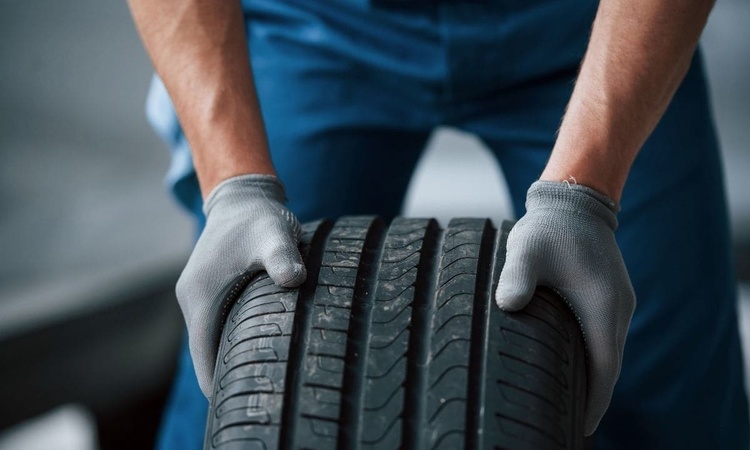Tire Care Strategies to Improve Fuel and Range Efficiency
Effective tire care is a straightforward way to improve fuel economy and vehicle range, whether you drive a combustion-engine car, a hybrid, or an electric vehicle. Small, consistent actions—correct inflation, timely rotation, and regular inspections—can reduce rolling resistance, lower emissions, and extend the usable life of tires. This article outlines practical maintenance steps, diagnostic tools, and systems-level approaches that help drivers and fleet managers maximize efficiency.

Proper tire care directly influences how much energy a vehicle needs to move. Underinflated or unevenly worn tires increase rolling resistance, forcing the engine or electric drivetrain to use more power and reducing miles per gallon or range. Beyond inflation, correct tire selection for seasonal and load conditions, regular visual inspections, and scheduled servicing all contribute to consistent efficiency. This opening summary frames the practical strategies that follow, showing how maintenance, diagnostics, telematics, and software systems combine to preserve fuel economy and extend range while supporting safety and emissions goals.
How does tire maintenance affect efficiency?
Routine maintenance—keeping tires at the manufacturer-recommended pressure, rotating them on schedule, and replacing worn units—reduces rolling resistance and improves handling. Proper inflation alone can improve fuel economy by several percent, because both underinflation and overinflation alter the contact patch and energy lost to deformation. Tire maintenance also includes choosing tires with appropriate tread compound and low rolling resistance ratings when available. For fleets, documented maintenance schedules and preventive servicing reduce unexpected downtime and maintain uniform tire performance across vehicles, supporting predictable range and lower operating costs.
What role do diagnostics and sensors play?
Modern vehicles use tire pressure monitoring systems (TPMS) and other sensors to detect pressure loss, temperature anomalies, or unusual vibration patterns. Diagnostics tied to these sensors help identify alignment issues, uneven wear, or suspension faults that indirectly increase energy consumption. Integrating sensor data into routine inspection workflows enables technicians to prioritize corrective actions—such as wheel alignment, balancing, or suspension servicing—that restore optimal tire behavior. For vehicles with autonomous or advanced driver assistance systems, reliable sensor calibration is also critical to ensure safety features function correctly while preserving efficiency.
How can telematics improve range and servicing?
Telematics platforms collect data from TPMS, on-board diagnostics, and fuel or battery management systems to deliver real-time insights on tire condition and vehicle efficiency. Fleet managers can use telematics to schedule preventive maintenance, detect trends in rolling resistance across routes, and optimize tire utilization. Alerts for decreasing tire pressure or abnormal wear help avoid energy losses and safety risks. When combined with route planning and charging or refueling strategies, telematics supports decisions that preserve range and reduce total cost of operation through data-driven servicing and inspection intervals.
How does electrification and charging impact range strategies?
Electric vehicles (EVs) are especially sensitive to tire-related efficiency losses because range is a direct function of energy consumed. Using tires designed for low rolling resistance and maintaining correct pressures can noticeably increase range per charge. Charging strategy and vehicle load also matter: heavier cargo increases tire deformation and energy draw, while aggressive charging habits can alter battery thermal conditions that indirectly affect efficiency. For EV owners, pairing tire-focused maintenance with planned charging stops and software updates to battery management can produce predictable range outcomes and better driving experience.
Why brakes, alignment, and inspections matter?
Brake drag, poor wheel alignment, or unbalanced wheels all increase the energy required to maintain speed. Regular inspection of brake calipers, pads, and parking brake adjustment prevents inadvertent drag that wastes fuel or battery capacity. Alignment checks and wheel balancing restore even tire wear and reduce the need for premature replacements. Inspections should also cover tire sidewall and tread integrity to detect cuts, bulges, or embedded debris that can lead to rapid pressure loss. These servicing steps protect safety while maintaining the efficiency advantages achieved through careful tire care.
How can software and calibration enhance efficiency?
Vehicle software—infotainment, powertrain control, and TPMS integration—can provide drivers with actionable efficiency feedback, such as optimal tire pressures for load and temperature, recommended servicing intervals, or alerts for inefficient driving behaviors. Calibration of sensors and autonomy systems ensures accurate diagnostics and prevents false positives that could lead to unnecessary interventions. Over-the-air updates and service software tools also help technicians apply the latest parameters for tire and brake control, contributing to consistent performance and lower emissions where applicable.
In summary, improving fuel economy and range starts with disciplined tire care combined with diagnostic and software tools that maintain optimal vehicle behavior. Correct inflation, scheduled rotation, alignment, and prompt servicing reduce rolling resistance and energy waste while supporting safety and longer tire life. For commercial operations and individual drivers alike, integrating telematics, sensors, and calibrated software into routine inspection and maintenance workflows is an effective approach to preserve efficiency and predictability across varied driving conditions.





